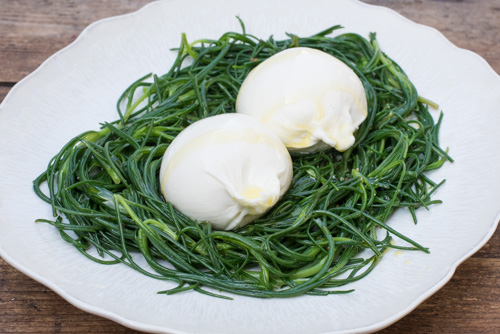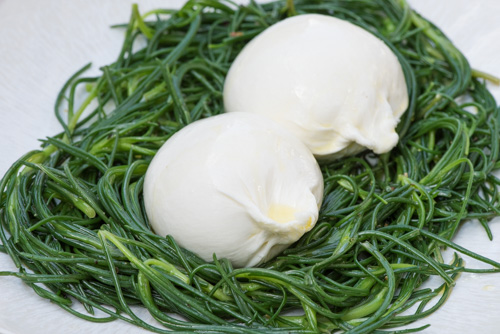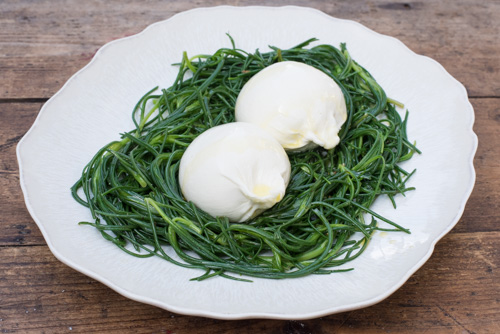Monk's beard with burrata
 Tuesday, April 12, 2016 at 8:36PM
Tuesday, April 12, 2016 at 8:36PM

Monk’s Beard, also known as Friar’s Beard or Goat’s Beard, is a delicious Mediterranean plant, mainly cultivated in Southern Italy, Spain and Northern Africa. It looks similar to chives, but the flavour is somewhere between samphire (salty with a hint of the sea) and spinach (minerality).
It is generally served blanched, lightly fried or steamed, so that it retains its crunch. I like it best with a simple dressing of olive oil and lemon, as in this salad, but it also works well with anchovies, garlic, chilli and/or fresh herbs. With any of these additions, it makes a great side for white, flaky fish.
In this salad, the rich and creamy burrata provides a perfect contrast in both taste and texture. Make sure you use a good quality olive oil, as you really will taste it.
This dish, though quick and easy to prepare, is elegant and refined; a great one to have up your sleeve for a dinner party when you are short on time.
Serves 2 as a main or 4 as a starter or side.

Ingredients
300g Monk’s beard
Extra virgin olive oil, to taste
Squeeze lemon juice, to taste
Sea salt, to taste
Freshly ground black pepper, to taste
2 x 125g burrata
Method
Put a large saucepan of water on to boil.
Trim the Monk’s beard by removing the roots and any tough or woody stems. Remove the boiling water from the heat, add the Monk’s beard and blanch for 30 seconds, stirring if necessary to make sure it cooks evenly.
Drain the Monk’s beard and put it in a mixing bowl. Dress with a generous drizzle of olive oil and a squeeze or two of lemon juice, to taste. Season with salt and pepper, to taste.
Make a bed of Monk’s beard on your serving plate(s) and place the whole burratas on top. Drizzle with olive oil and serve with fresh, crunchy bread.

 Vix |
Vix |  3 Comments |
3 Comments | 
Reader Comments (3)
henrraysh e3d3fd1842 https://www.americansportsforum.com/kingviloword
henrraysh e3d3fd1842 https://www.americansportsforum.com/kingviloword
henrraysh e3d3fd1842 https://www.americansportsforum.com/kingviloword